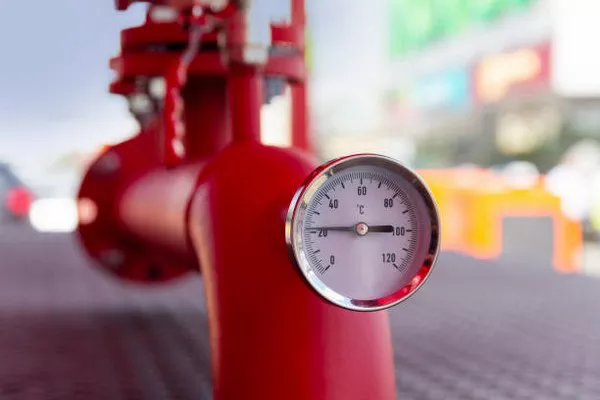In the realm of meteorology, the digital barometer stands as a crucial instrument, providing invaluable insights into atmospheric pressure changes. As technology advances, traditional mercury barometers have made way for their digital counterparts, offering enhanced precision and convenience. This article delves into the intricate workings of digital barometers, shedding light on the principles that govern their functionality and their significance in various fields.
The Basics of Atmospheric Pressure:
Before delving into the digital realm, it is essential to grasp the fundamental concept of atmospheric pressure. Atmospheric pressure is the force exerted by the air molecules in the Earth’s atmosphere. At sea level, this pressure is approximately 1013.25 hectopascals (hPa) or 29.92 inches of mercury (inHg). As one ascends in altitude, atmospheric pressure decreases, leading to variations that are pivotal for weather forecasting and aviation.
Digital Barometer Components:
A digital barometer is a sophisticated device that utilizes electronic components to measure atmospheric pressure accurately. The primary components include a pressure sensor, microcontroller, and a display unit.
Pressure Sensor: At the heart of a digital barometer lies the pressure sensor, which detects changes in atmospheric pressure. Most digital barometers employ microelectromechanical systems (MEMS) pressure sensors that use a diaphragm to sense pressure variations. As atmospheric pressure changes, the diaphragm deflects, causing a change in electrical resistance or capacitance. This change is then converted into an electronic signal that can be processed by the microcontroller.
Microcontroller: The microcontroller serves as the brain of the digital barometer, responsible for processing the signals received from the pressure sensor. It converts the analog signal into digital data, compensates for environmental factors such as temperature, and performs any necessary calibration. Additionally, the microcontroller can store historical pressure data and interface with other devices for data transmission.
Display Unit: The display unit provides a user-friendly interface, presenting the measured atmospheric pressure in a readable format. Modern digital barometers often feature LCD or LED displays that showcase pressure readings in various units, such as hPa, inHg, or millibars. Some advanced models may also include additional information like altitude, temperature, and weather trends.
Operating Principles:
Digital barometers operate on the same principles as their traditional counterparts, using Boyle’s Law and the ideal gas law as the foundation. Boyle’s Law states that at a constant temperature, the pressure of a gas is inversely proportional to its volume. The ideal gas law combines Boyle’s Law with Charles’s Law, stating that the pressure of an ideal gas is directly proportional to its temperature and density.
As the atmospheric pressure changes, the pressure sensor within the digital barometer detects these variations. The microcontroller processes the signals and compensates for temperature fluctuations to provide accurate pressure readings. This data can be crucial for predicting weather patterns, as a drop in pressure often precedes inclement weather, while a rise may indicate fair conditions.
Applications in Weather Forecasting:
Digital barometers play a pivotal role in weather forecasting by providing real-time atmospheric pressure data. Meteorologists utilize this information to monitor and predict changes in weather patterns. A sudden drop in atmospheric pressure, for example, may signal an approaching low-pressure system associated with storms or precipitation. Conversely, a rise in pressure could indicate clearing skies and stable weather conditions.
Aviation and Altitude Measurement:
In the aviation industry, accurate altitude measurements are vital for the safety and navigation of aircraft. Pilots rely on digital barometers to obtain precise pressure readings, which are then used to calculate the aircraft’s altitude. This information is crucial for maintaining proper flight levels, especially during takeoff, landing, and when navigating through varying atmospheric conditions.
See Also Barometer-Definition, Working, And Types
Conclusion:
In conclusion, the digital barometer stands as a testament to technological advancements in meteorological instrumentation. By combining cutting-edge pressure sensors with sophisticated microcontrollers, digital barometers provide accurate and real-time atmospheric pressure data. Their applications extend beyond weather forecasting, influencing fields such as aviation, where precise altitude measurements are essential. As technology continues to evolve, digital barometers will likely become even more integral in our efforts to understand and predict the complexities of the Earth’s atmosphere.

